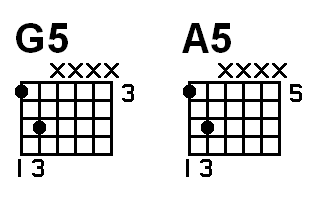This opening riff for "Secret Agent Man", as recorded by Johnny Rivers, was a big hit in the 60's, and was a predecessor to the "James Bond" theme song.
The riff, although not technically difficult, can be a little tricky to pull off at first.
Look at the TAB for the opening riff below. If you are not familiar with TAB please see our tutorial titled "How to Read TAB".

The riff begins by placing the 1st finger on the 2nd fret of the 3rd string. Play that note along with the open 1st and 2nd strings, let the 1st and 2nd strings sustain while sliding on the 3rd string from the 2nd fret to the 4th fret.
All the fretted notes occur on the 3rd string. Hand and finger movement can be kept to a minimum by playing the notes on the 4th fret with the 1st finger, the notes on the 5th fret with the 2nd finger, and the notes on the 6th fret with the 3rd finger.
If you are unfamiliar with string numbers see "Naming the Open Strings". For a review on "finger" numbers see "Fret & Finger Numbering" tutorial.
There are two measures in the above TAB. They are identical, just learn one and you have to whole riff!
Play this slowly to begin with and then gradually work up speed. Have fun!
Enjoy...
![]()



